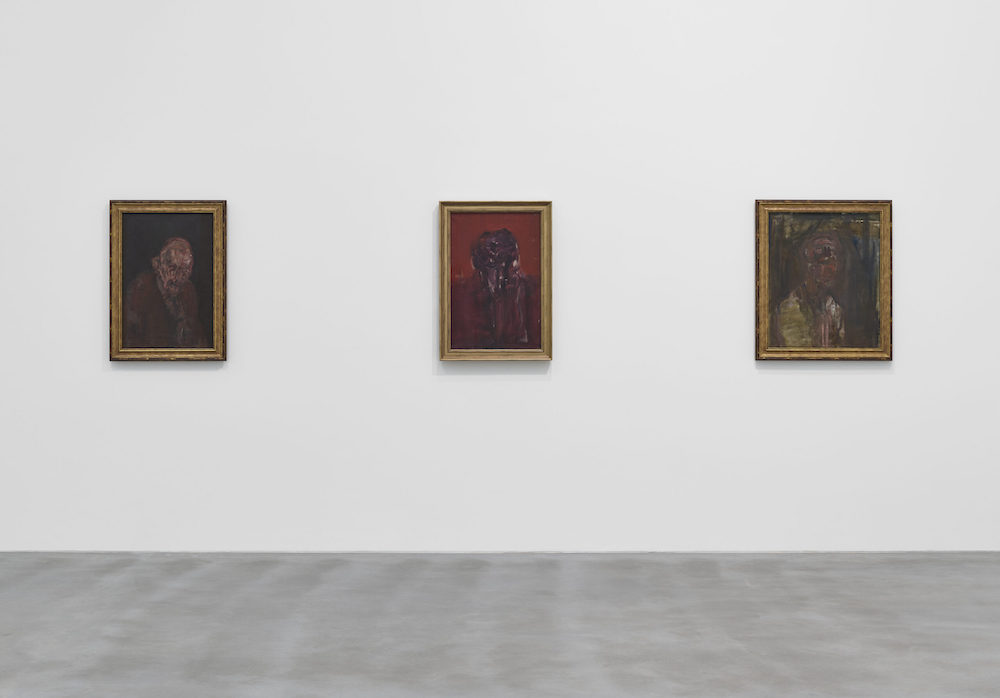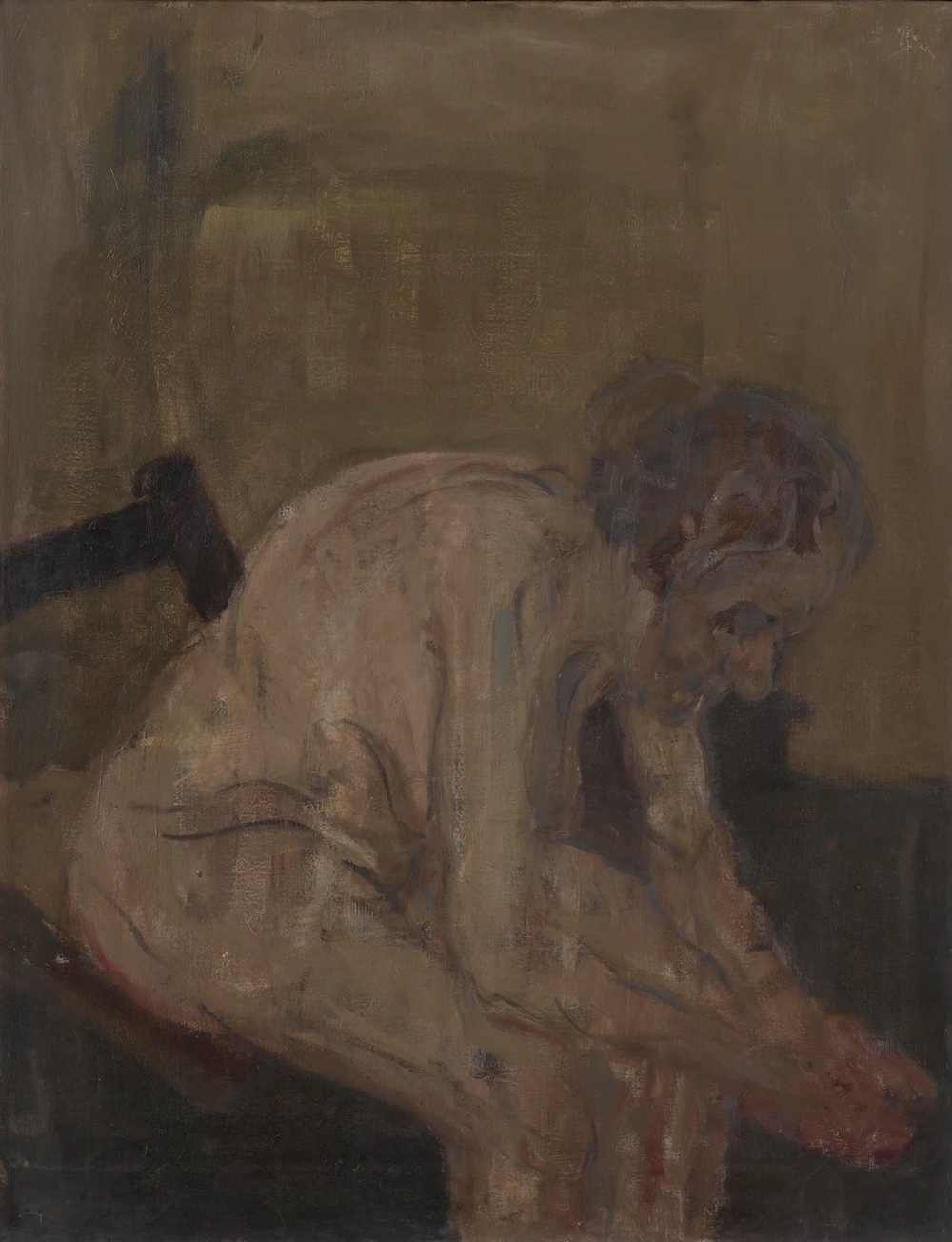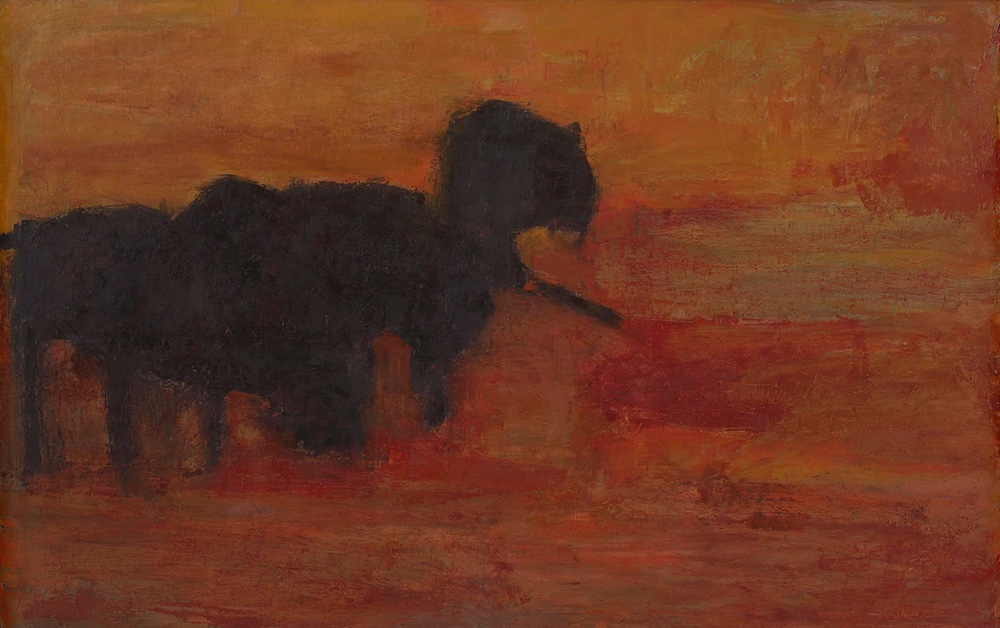Keith Cunningham: The Cloud of Witness | Newport Street Gallery
This is a deeply gloomy exhibition of densely-worked oil paintings with a repeating roster of macabre subjects. Dogs, fighting each other; animal carcasses and slabs of meat and fish; portraits surrounded by foul, foggy miasmas, in semi-silhouette. The grandeur of the paintings’ surroundings - every time I come to this Damien Hirst-owned gallery, I’m struck by its lofty luxuriousness - sets them off wonderfully.
The story behind the exhibition is unusual: the works were created over half a century ago, but have been barely seen since. When he died in 2014, Keith Cunningham was primarily known as a successful Australia-born, UK-based graphic designer. His earlier career as a painter - he exhibited from 1952 to 1967 - was forgotten. After 15 years on show, Cunningham himself decided to stop - and packed his oils away in a warehouse.

Aside from a small exhibition in Hoxton in 2016, this large show is our first opportunity to view Cunningham’s work. Wandering through the galleries, I felt like I was taking a time machine back to the smog-filled London of the 1950s, slotting this artist into place alongside his peers, who produced similarly downbeat, almost grimy reflections on post war gloom: Leon Kossoff and Prunella Clough, for example.
The show notes make an explicit link between Cunningham and a more famous artist of the time, who is on show at the Royal Academy right now: Francis Bacon. I can see some overlap in their palette - the sick orangey-red backdrop to one of Cunningham’s dourest portraits, The Commuter (1952), could easily be transposed to one of Bacon’s monstrous triptychs of the time. But while Bacon prized emotional immediacy above all else, Cunningham’s portraits are withholding, clouded, sometimes even in silhouette, as in a particularly striking image of another artistic contemporary, Frank Bowling.

Despair (1956) gets a wall all to itself, and seems like a mission statement. A seated female figure, face a mask of grey, leans forward, twisting away from us. Her pinkish hands are burn-victim stumps. The sags and folds of her belly and breasts are mercilessly picked out by the artist; he might as well be painting meat on a butcher’s block.
Cunningham went to Spain too, visited the Prado in Madrid often, and was clearly deeply marked by Goya’s Black Paintings. There’s something of their hopeless spirit in his paintings of packs of dogs, in silhouette, on a burnt umber backdrop; Goya of course painted a dog in shadow for the very bleakest of his series.
In Four Dogs, Spain (1955, pictured below), it’s impossible to tell if the dogs are playing or pouncing on prey.

Perhaps showing this dark work all got a bit too much for the artist, and he retreated instead to the safer world of designing book covers and ad campaigns. Or perhaps that’s an overly sentimental interpretation, and Cunningham was able easily to compartmentalise the spectacular bleakness of his art with leading a happy life, and just couldn’t be bothered with the strains of exhibiting himself any more.
The show notes don’t give us much of a clue about the reasons behind Cunningham’s 1967 decision to withdraw. Though they do hint at a “complicated personality” and the “hidden violence” of his aesthetic. Either way, the decision to go so big on this show, and expose him to the public once more, was a great one.
Hopefully, once these paintings go back to whichever potentially Damien Hirst-owned warehouse they came from, they don’t stay in there for long.
Keith Cunningham: The Cloud of Witness is at Newport Street Gallery (London). 16 February - 21 August 2022